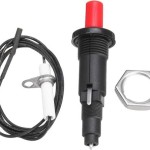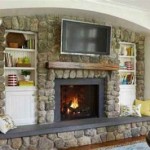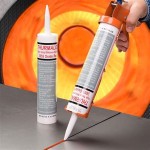DIY Outdoor Fireplace with Cinder Blocks: A Comprehensive Guide
An outdoor fireplace provides a focal point for outdoor living spaces, extending the usability of patios and gardens throughout the year. Building a fireplace is often perceived as a complex and expensive undertaking. However, utilizing cinder blocks offers a cost-effective and relatively simple method for constructing a durable and aesthetically pleasing outdoor fireplace. This article provides a comprehensive guide to building a DIY outdoor fireplace with cinder blocks, covering planning, material selection, construction steps, and safety considerations.
Planning and Design Considerations
Before initiating the construction process, thorough planning is essential. This phase involves determining the desired size and style of the fireplace, assessing the location, and acquiring any necessary permits. A well-defined plan ensures a smoother and more efficient building experience.
The size of the fireplace should be proportional to the size of the outdoor space. A large fireplace in a small courtyard might overwhelm the area, while a small fireplace in a sprawling backyard may appear insignificant. Consider the intended use of the fireplace. Will it primarily serve as a decorative feature, or is it intended for cooking and providing substantial heat? These factors will influence the dimensions and design of the firebox.
Several design styles can be achieved using cinder blocks. A simple, rectangular structure provides a modern and minimalist aesthetic. Alternatively, a curved or tiered design can add visual interest. Consider incorporating features such as a built-in wood storage area or a chimney extension to enhance the functionality and appearance of the fireplace.
Location selection is paramount. The fireplace should be situated away from flammable materials, such as trees, fences, and overhanging structures. Consider wind direction and prevailing breezes to minimize smoke exposure. Ensure adequate clearance from property lines and neighboring residences to avoid potential conflicts. Local building codes and regulations may dictate specific setback requirements.
Most jurisdictions require permits for outdoor fireplaces. Contact the local building department to determine the necessary permits and inspections. Failure to obtain the required permits can result in fines or orders to dismantle the structure. The permitting process may involve submitting detailed plans and specifications for review.
Materials and Tools
The following materials and tools are typically required for constructing a cinder block outdoor fireplace:
- Cinder blocks: The quantity will depend on the size and design of the fireplace.
- Concrete mix: For creating the foundation and mortar.
- Fire bricks: For lining the firebox to withstand high temperatures.
- Mortar mix: Specifically formulated for high-temperature applications within the firebox.
- Gravel: For drainage under the foundation.
- Rebar: To reinforce the foundation and structural integrity.
- Metal chimney liner: To ensure proper ventilation and prevent smoke from escaping through the cinder block structure.
- Chimney cap: To prevent rain and debris from entering the chimney.
- Shovel: For digging the foundation.
- Wheelbarrow: For mixing concrete.
- Mixing hoe or concrete mixer: For thoroughly combining the concrete ingredients.
- Level: To ensure the structure is plumb and level.
- Trowel: For applying mortar.
- Brick hammer and chisel: For cutting cinder blocks and fire bricks.
- Safety glasses and gloves: To protect eyes and hands.
- Measuring tape: For accurate measurements.
- String line: To ensure straight lines and alignment.
- Angle grinder with a masonry blade: For precise cutting of cinder blocks, especially for angled designs.
The quality of the materials is critical to the longevity and safety of the fireplace. Opt for high-strength cinder blocks and fire bricks that are specifically designed for high-temperature applications. The mortar used within the firebox must be heat-resistant to withstand the extreme conditions.
Construction Steps
The construction process can be broken down into several key steps:
1. Preparing the Foundation:
The foundation is the base of the fireplace and must be strong and stable. Excavate the area for the foundation to a depth of at least 6 inches. The dimensions of the foundation should be larger than the footprint of the fireplace to provide adequate support. Add a layer of gravel to the excavated area for drainage. Pour a concrete slab reinforced with rebar. Ensure the surface is level and allow the concrete to cure completely before proceeding to the next step.2. Laying the First Course of Cinder Blocks:
Begin laying the first course of cinder blocks on the cured concrete foundation. Use a level to ensure that each block is level and aligned. Apply mortar between the blocks and tap them into place with a rubber mallet. Verify that the corners are square and that the course is level before proceeding.3. Building the Firebox:
The firebox is the heart of the fireplace and must be constructed with fire bricks to withstand high temperatures. Line the interior of the firebox with fire bricks, using heat-resistant mortar. Ensure the fire bricks are tightly fitted together to prevent heat from escaping and damaging the cinder block structure. The dimensions of the firebox should be appropriate for the intended use of the fireplace.4. Constructing the Chimney:
The chimney is responsible for venting smoke away from the fireplace. Construct the chimney using cinder blocks, ensuring that the structure is plumb and level. Install a metal chimney liner inside the chimney to provide a smooth and consistent flow of smoke. The chimney liner should extend above the top of the cinder block structure and be capped with a chimney cap to prevent rain and debris from entering.5. Adding Finishing Touches:
Once the main structure is complete, add any desired finishing touches. This may include applying a stucco finish to the cinder blocks, installing a mantel, or adding decorative stone facing. Ensure that all materials used are fire-resistant and compatible with the high-temperature environment.Safety Considerations
Safety should be a primary concern throughout the entire construction process. Wear safety glasses and gloves to protect your eyes and hands. Use caution when working with power tools and follow all manufacturer's instructions. Ensure that the fireplace is built in accordance with local building codes and regulations.
After constructing the fireplace, allow the mortar and concrete to cure completely before using it. When using the fireplace, never leave it unattended. Keep flammable materials away from the firebox. Regularly inspect the fireplace for cracks or damage and make any necessary repairs promptly. Clean the chimney regularly to remove creosote buildup, which can pose a fire hazard.
A spark arrestor is a mesh screen that is installed at the top of the chimney to prevent embers from escaping and potentially igniting surrounding vegetation. A spark arrestor is particularly important in areas with dry vegetation or during periods of high fire risk. Choose a spark arrestor that is appropriately sized for the chimney and made of high-quality materials. The spark arrestor should be regularly inspected and cleaned to ensure that it is functioning properly.
Enhancements and Customization
The basic cinder block fireplace design can be customized to suit individual preferences and needs. One popular enhancement is the addition of a built-in wood storage area. This can be achieved by creating a niche within the cinder block structure, providing a convenient place to store firewood. The storage area should be located away from the firebox to prevent the wood from drying out too quickly.
Another customization option is the addition of a cooking grate. This allows the fireplace to be used for grilling and cooking food. The cooking grate should be made of stainless steel or other heat-resistant materials. Install the grate at a comfortable height above the firebox and ensure that it is securely supported. Consider adding a system for adjusting the height of the grate to control the cooking temperature.
The aesthetic appeal of the fireplace can be enhanced through various finishing techniques. Applying a stucco finish to the cinder blocks provides a smooth and uniform surface that can be painted or textured. Stone veneer can be applied to the exterior of the fireplace to create a more rustic and natural look. A mantel can be added to the top of the fireplace to provide a decorative shelf. Consider incorporating lighting fixtures to illuminate the fireplace and surrounding area.

Concrete Block Outdoor Fireplace

Chris Loves Julia Diy Outdoor Fireplace Home Sweet Homes

Saguaro Diy Outdoor Fireplace Plan

Backyard Fireplace Part 2 Milk Paint

Backyard Fireplace Part 2 Milk Paint

Build An Outdoor Fireplace The Shed

Cinder Blocks Are Easy To Find For Free And They Have Almost Unlimited Diy Potential Here S Outdoor Fireplace Plans Backyard

How To Build An Outdoor Fireplace Step By Guide Buildwithroman

Santa Cruz Diy Outdoor Fireplace Plan 40 Pg

Chris Loves Julia Diy Outdoor Fireplace Home Sweet Homes








